
The moorish King sighed once again for Alhama at the rhythm of blues, jazz and bossanova, for the first time in history, the Alhama most famous Romances were recited in English language at the Royal Plaza.
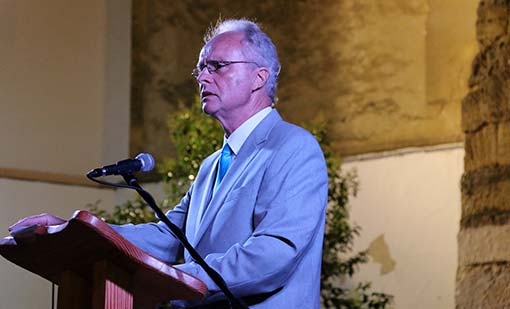
In 1997, the I Velada, Alhama City of Romances took place in the historical Plaza Mayor, known also as Plaza de los Presos in this Royal city of Alhama de Granada.
The idea behind the event was to revive the tradition where poetry, music and literature come together in the Royal Plaza of Alhama de Granada as it happened in the middle ages to inform people of the achievements of the chivalry and royalty.
The event has continued uninterrupted and on saturday 8th August its XIX edition was presented for the first time, in two languages, Spanish and English as the Patronato de Estudios Alhameños, the Ayuntamiento de Alhama through its Culture Council and Alhama Comunicación have dedicated the fabulous evening of poetry and music to the International Community living in the area who have made an enormous effort over the centuries to promote Alhama, its beauty, landscape, history, baths and traditions.
The event started with a welcome from the President of the Patronato, Andrés García Maldonado who
introduced me to the audience Alina Strong, a Mexican resident in Alhama who´s grandfather was born in Granada and who left this lands at the beginning of the Civil War and never returned to his homeland.
My participation included the following speech:
 The Romances are a literature genre that became very popular during the middle ages and has made Alhama known worldwide with its "Ay de mi Alhama" Romance that belongs to the frontier romances, as they were written in places which were the frontiers between the Moorish and Castillian kingdoms back in the XV century.
The Romances are a literature genre that became very popular during the middle ages and has made Alhama known worldwide with its "Ay de mi Alhama" Romance that belongs to the frontier romances, as they were written in places which were the frontiers between the Moorish and Castillian kingdoms back in the XV century.
In the historical royal plaza, the Romances were told, music was played and this plaza was the centre of the government during the renaissance in Alhama.
The Romans, who built the baths in Alhama, the Moors who inhabited and enriched this land, the Castillians and Andalucians who have developed this magical mixture of pleasure and solace about Alhama and people from all over the world have travelled to Alhama over the centuries, whether to visit, as passing merchants, workers, explorers, writers, painters and artists.
After the conquest by the Castillians, Alhama was given the status of Royal City by Ferdinand II of Aragón and Isabel I, Queen of Castille. To this day Alhama still holds the title of royal city.
Famous international travellers, writers and artists have written about Alhama with records back to the XIV century and by the year 1564 Belgian painter Joris Hoefnagel produced this fine drawing of Alhama.
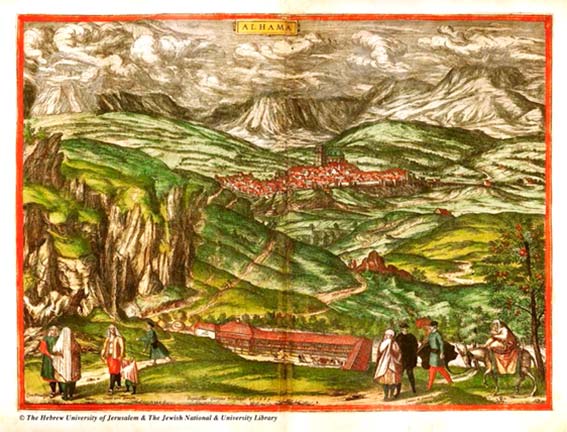
Anton van den Wyngaerde, a Belgian citizen who in the XVI century was the most important painter of urban landscape in Europe, painted Alhama in 1567.
Written records about Alhama mention the city as a pleasant place where to rest, eat and bathe as it was located on the main route from Malaga to Granada. In many literary mentions, Alhama was not a final destination, but a place worth a visit. This principle applies to this day as Alhama has not developed its true potential as a tourist destination, but we are working on it.
Pedro de Medina, a geographer from Seville, in his "Book of greatness and memorable things of Spain", published in 1548 described the city of Alhama as a city which starts by the river banks going up until you get to the top, which is flat and there are many streets and plazas and it is a walled city.
The most influential Spanish writer of all times, Miguel de Cervantes Saavedra, travelled twice to Alhama in 1594, on his way to and from Granada to Velez Malaga. Even if he did not make any reference about it in his famous Don Quixote, I am sure he was captivated by it.
"A year in Spain by a young American" was written by Alexander Slidell Mackenzie as a recollection of his trip in 1827 and his detailed account of the monumental city of Granada and the region was the trigger for Washington Irving to visit this land.
Washington Irving, American diplomat and writer, who visited Alhama wrote in his ¨War of Granada¨ in 1829 a recollection of the historical event of the loss of Alhama on 28 February 1482 and the Tales of the Alhambra in 1832, giving true international recognition to the area. Now the Washington Irving route is a tourist attraction in Andalucía.
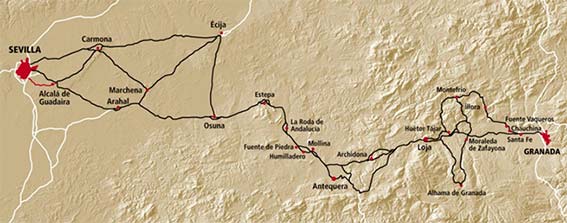
The Romances that have given Alhama its fame in universal literature are "Woe is me Alhama" and "Moor Alfaqui". Both Romances belong more to the legend than to the historical events due to the lack of historical evidence but they clearly explain what happened when the Castillians arrived to Alhama and took it from the Moors.
When you listen to or read them, you are transported back to the day Alhama was taken by the Castillians on that historical date of 28 February 1482.
In 1817, Lord Byron translated the Romances "Ay de mi Alhama and Moro Alcaide" to the English language and made them known worldwide.

Richard Ford, English writer of the XIX century came to Alhama and wrote about the Royal Hospital , the public jail and the arab quarter.
The list of visitors is immense, and for the last five centuries, people have visited Alhama and have thought it worth a mention, a painting, a drawing, a verse or a prose having taken the name of the Royal and noble city of Alhama to the world.
Today´s international community residing in the area, are the true Ambassadors of Alhama, bringing people from all over the world to visit and enjoy the city and its people, all year around.
People born in Alhama have the privilege to live here all their lives but the international residents have chosen to move and settle here, wish to absorb the beauty, history, and environment of this land and share it with its people.
The contribution that the international community makes to the area goes beyond the tourism as very talented artists, workers, entrepreneurs and writers have chosen to establish themselves in the Comarca.
We invest our savings here, set up businesses, pay taxes, and our financial contribution helps to keep the local economy going as we buy locally, hire local staff in our businesses and pay rent and buy properties in the area. Currently , there are international residents from seventeen different nationalities living in the Comarca de Alhama and five continents are represented. There is only people from Antarctica still outstanding to move to the area.
The international community are the true Ambassadors of Alhama as their promotion and services attracts a large number of the international tourists offering from accommodation and food and beverages services, to leisure activities such as cycling, horse riding, hiking, marathon and trail running training, international ultra marathon competitions, themed tours, yoga, wellbeing and training courses and retreats, painting and sculpting workshops and exhibitions, wine and gastronomy themed holidays, photography and environmental related activities, etc. and their contribution to the area is immense; to you, the international entrepreneurs, thank you.
The Comarca de Alhama is also home to hundreds of people who mainly come from sub-Saharan and Latin American countries to work in the fields, whether in the vegetable producing farms or the olive and almond groves, side by side with the local farmers, and who's work helps bring affordable, good quality food to our tables. They make this region famous for its produce and help the local economy.
We feel welcomed by the Spanish and we share their love and affection for this beautiful land, its environment and its people and have the commitment to work with you, shoulder to shoulder to promote and publicise the Comarca de Alhama.
And today, we thank Alhama and its people for the warm welcome we received, the acknowledgment to our existence and the long lasting friendship we are developing with the people of Alhama.
The Comarca de alhama is home to nearly 18.000 people but the number of tourists visiting Alhama during 2014 alone, was 16.000. And there were many
The international community is happy to participate, in activities which promote and enhance the image of the Comarca de Alhama and its beautiful towns and villages. Tourism is the way forward.
The evening was followed by Lawrence´s Strong reciting Woe is me Alhama and Moor Alfaqui, the most famous Romances of Alhama, for the first time in history in old English language, as translated by Lord Byron in 1817.
“Woe is me, Alhama”
 The Moorish King rides up and down,
The Moorish King rides up and down,
Through Granada´s royal town,
From Elvira´s gate to those
Of Bivarambla on he goes.
Woe is me, Alhama!
Letters to the monarch tell
How Alhama´s city fell:
In the fire the scroll he threw,
And the messenger he slew.
Woe is me, Alhama!
He quits his mule,
And mounts his horse,
And through the street directs his course;
Through the street of Zacatin
To the Alhambra spurring in.
Woe is me, Alhama!
When the Alhambra walls he gain´d,
On the moment he ordain´d
That the trumpet straight should sound
With the silver clarion round.
Woe is me, Alhama!
And when the hollow drums of war
Beat the loud alarm afar,
That the Moors of Vega and Granada
Might answer to the martial strain.
Woe is me, Alhama!
Then the Moors, by this aware,
That bloody Mars recall´d them there,
One by one, and two by two,
To a mighty squadron grew.
Woe is me, Alhama!
Out then spake an aged Moor
In these words the king before,
“Wherefore call on us, oh King?
What may mean this gathering?”
Woe is me, Alhama!
“Friends! Ye have, alas! To know
Of a most disastrous blow;
That the Christians, stern and bold
Have obtained Alhama´s hold
Woe is me, Alhama!
Out then spake old Alfaqui,
With his beard so white to see,
“Good King! Thou art so justly served,
Good King! This thou hast deserved.
Woe is me, Alhama!
“By thee were slain, in evil hour,
The Bencerrages, Granada´s flower;
And strangers were received by thee
Of Cordoba the Chivalry.
Woe is me Alhama!
“And for this, oh King! is sent
On thee a double chastisement:
Thee and thine, thy crown and realm,
One last wreck shall overwhelm.
Woe is me, Alhama!
Moor Alfaqui, Moor Alfaqui
Moor Alfaqui! Moor Alfaqui!
Though thy beard so hoary be,
The King hath sent to have thee seized,
For Alhama´s loss displeased.
And to fix thy head upon
High Alhambra´s loftiest stone;
That thus for thee should be the law.
“Cavalier and men of worth!
Let these words of mine go forth!
Let the Granada monarch know,
That to him I nothing owe
He was in Antequera attending his sisters wedding.
Fire burns the wedding celebrations and who called me upon them.
The King gave me permission that I asked for, fifteen days, and he gave me three weeks permission.
“But on my soul Alhama weighs,
And on my inmost spirit preys;
And if the King his land hath lost,
Yet others may have lost the most.
Sires have lost their children, wives their Lords, and valiant
men their lives!
One what best his love might claim
Hath lost, another wealth, or fame.
“I lost a daughter in that hour who was the flower of Granada.
He who has her captive Marques of Cadiz is called.
Doubloons a hundred I would pay.
And think her ransom cheap that day”
The answer I have received is that my daughter is Christian
and the name she has received is Doña Maria of Alhama.
The name that she has is Mora Fatima.
And as these things the old Moor said,
They sever´d from the trunk his head;
And to the Alhambra´s wall with speed
Twas carried as the King decreed.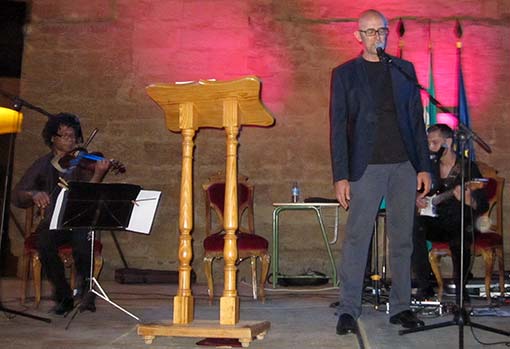
The musical part of the show was the magnificent performance named "Four textures of the Romance" where the three musicians presented us with a journey through the romances of the XV and XVI centuries accompanied by the rhythm of Bossa Nova, Blues and Jazz and cradle music. To complete the night, the Romance "Ay de mi Alhama was recited at the rhythm of moorish tunes. The musicians, Guillermo Crovetto, Joao Franca and actor narrator Victor Burgos with their performance received a standing ovation by the public.
Event images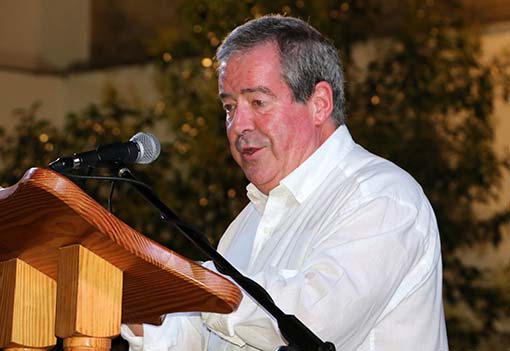

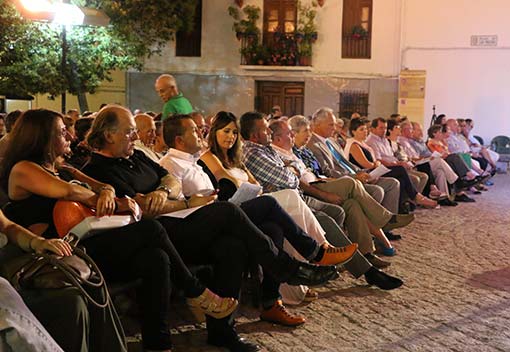
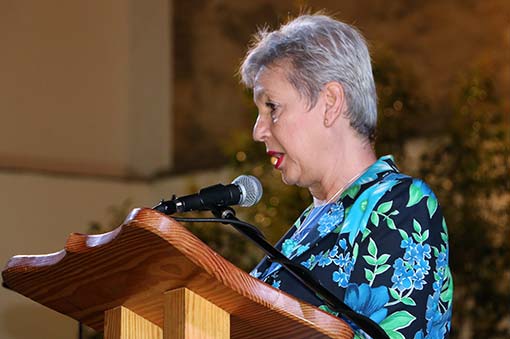


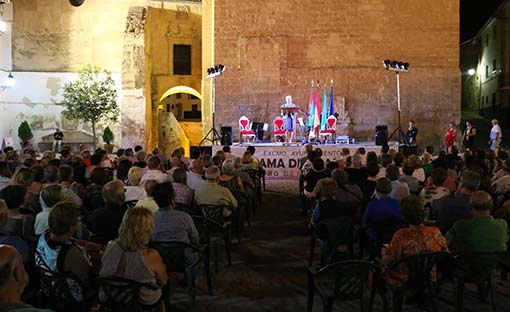



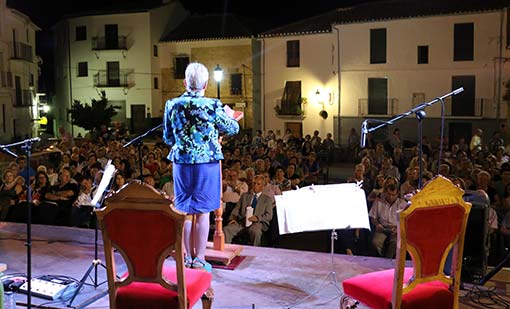
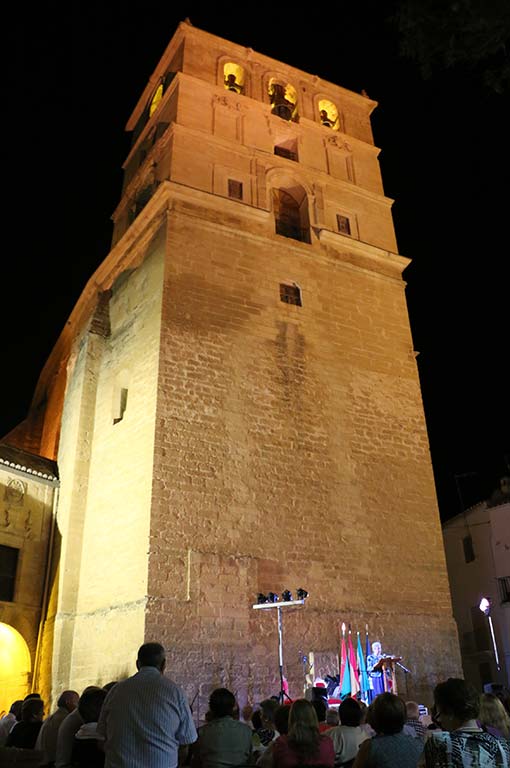
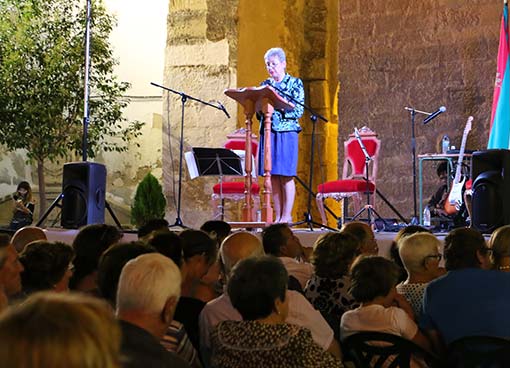
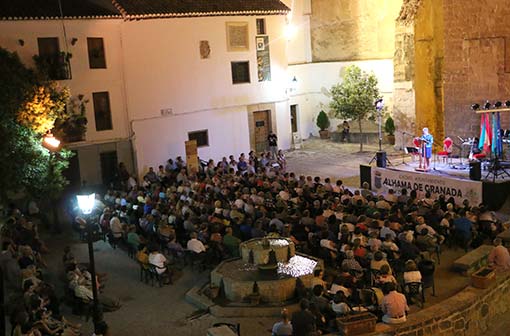
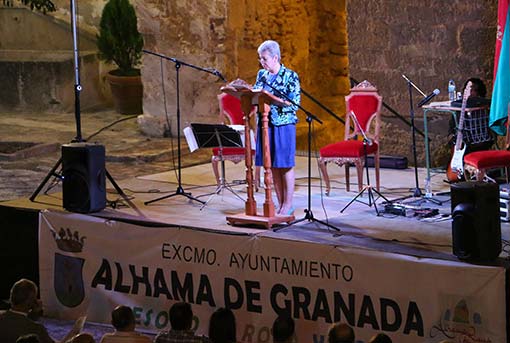
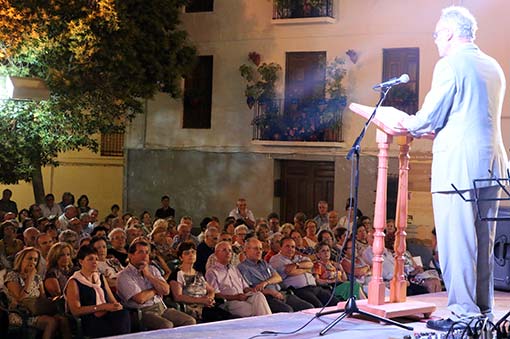

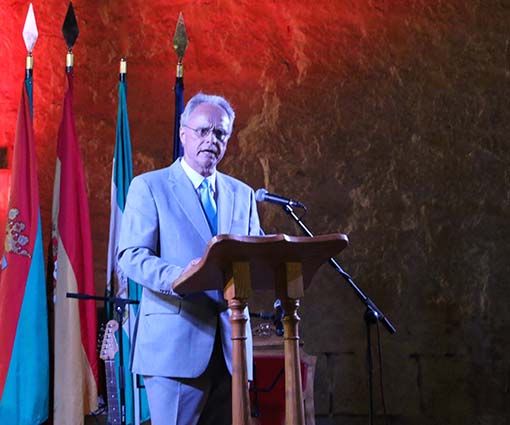
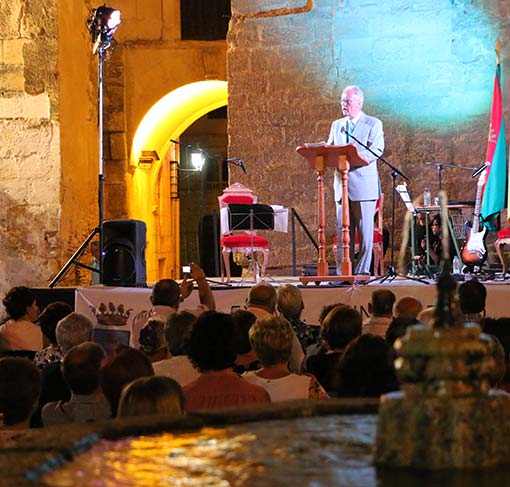
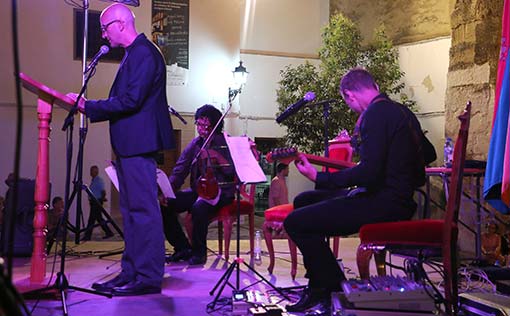

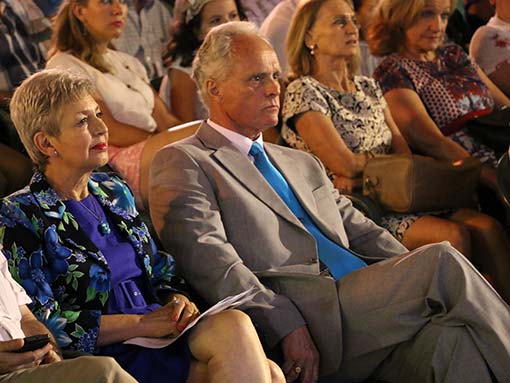
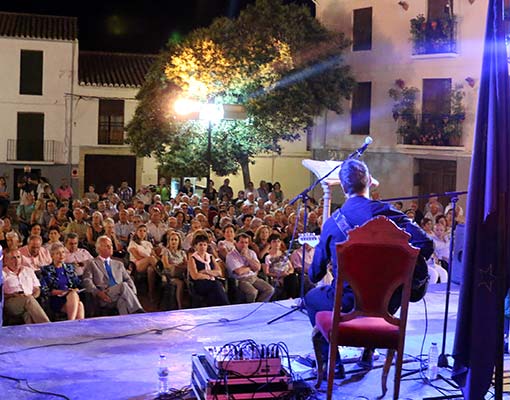

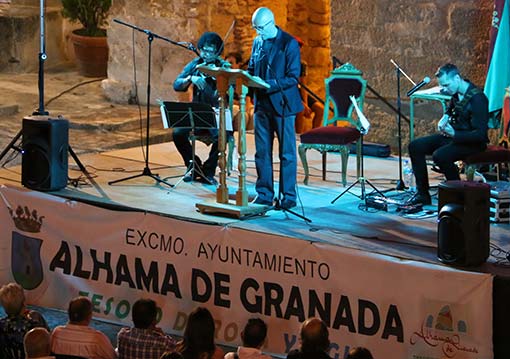
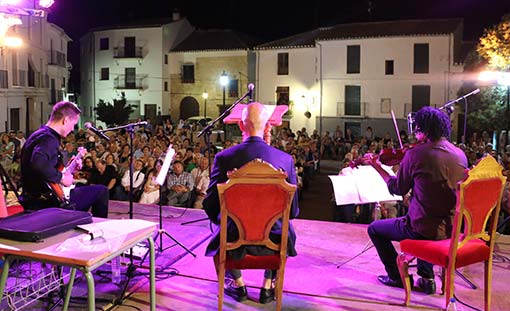

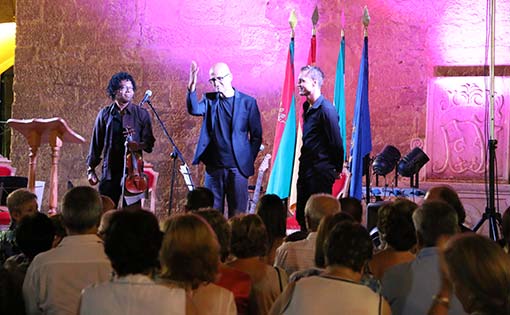
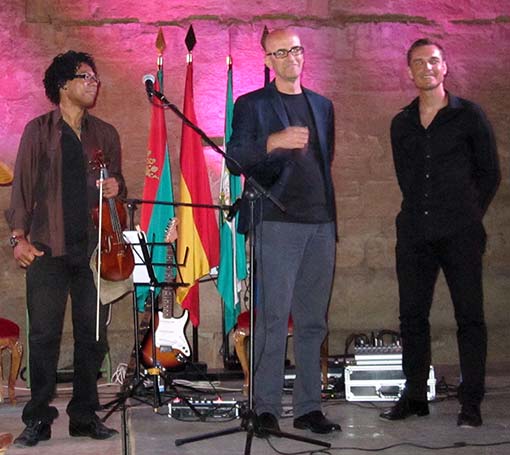
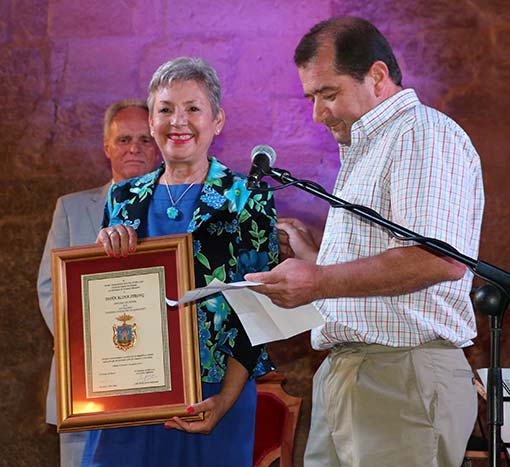

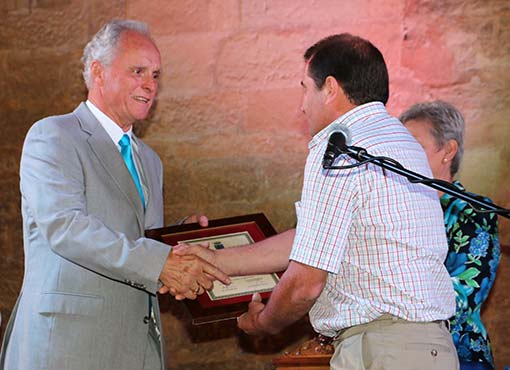
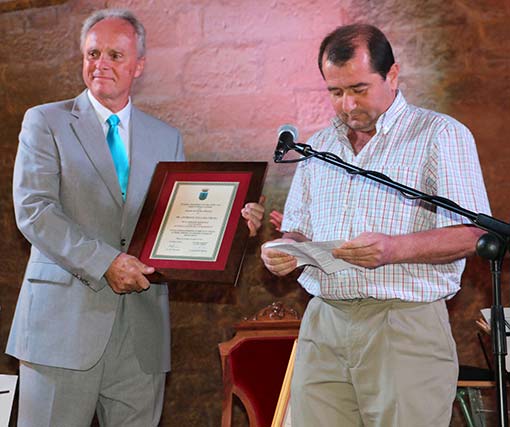
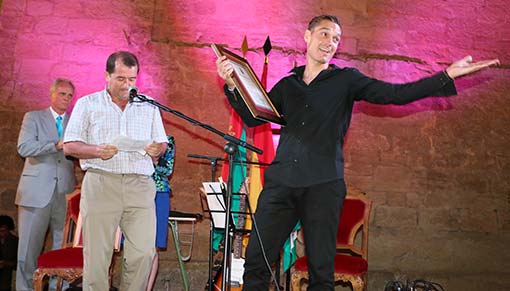
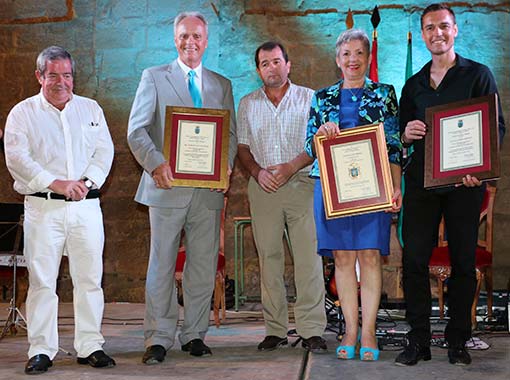
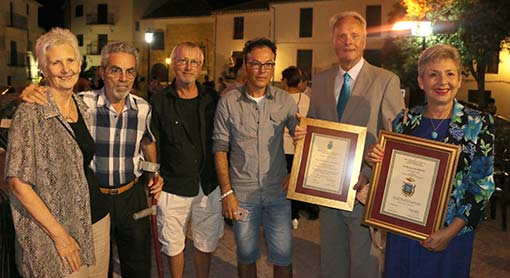
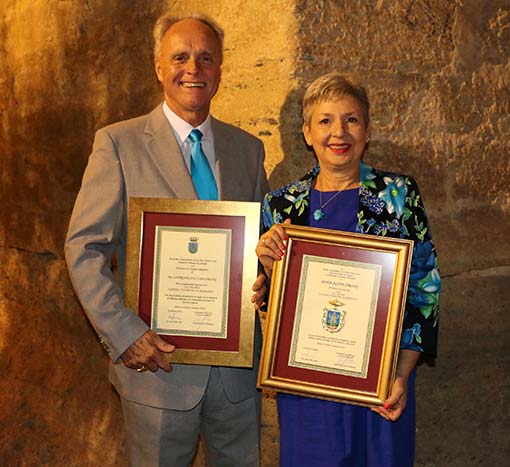
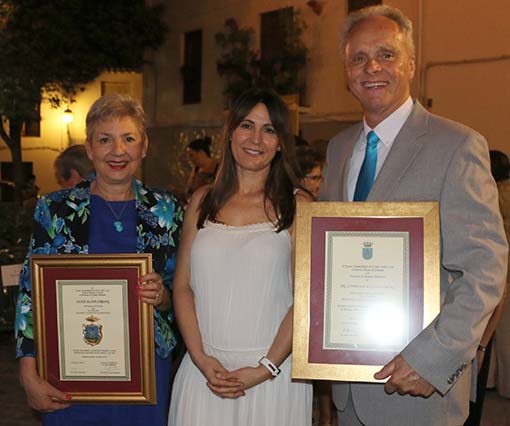

Picture editing: Pablo Ruiz and Prudencio Gordo
Next time.... What is the Romería del Vino all about?.


